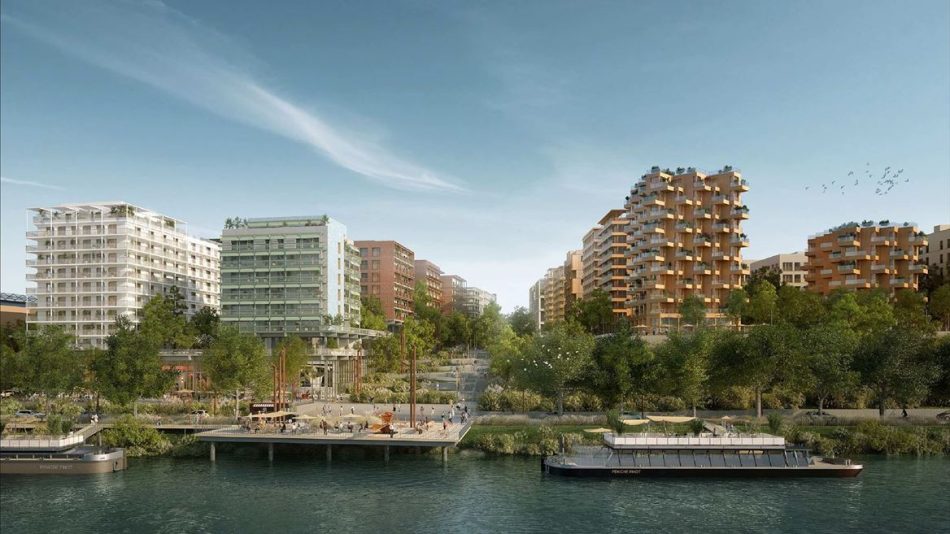The Olympic Village: A home away from home

IOC
10 Aug 2023 – A century on from when it first appeared at a Games, the Olympic Village remains an iconic part of the Games-time experience, while its purpose and legacy continue to evolve.
By Conor Ketley
While the first iterations of the modern Olympic Games brought athletes together on the field of play, there was no official plan in place to host those who travelled to compete.
The first Olympic Village, built for Paris 1924, changed that. These Games saw small wooden huts house the majority of athletes just a few minutes’ walk away from the Stade Olympique de Colombes in north-west Paris, where many of the events took place. This temporary accommodation, while proving practical in providing a convenient location for athletes to stay, was largely motivated by a desire to bring participants together under one roof, and also featured a post office, bureau de change and a restaurant.
“In bringing young people from every nation together, [the Olympic Games] help foster this sense of cordiality that teaches men to become acquainted with each other better first and then to hold each other in higher esteem, a process that the Paris Games will have greatly aided.”
These are the words of Frantz Reichel, Secretary General of the Organising Committee of the Olympic Games Paris 1924, in the Official Report of the Games. Reichel wrote this part of his report to emphasise the growth of the Olympic Movement since the inaugural Olympic Congress in 1894, but in the century since, the Olympic Village has taken on an even bigger role in uniting the Olympic Movement.
More than just accommodation
For most cities that host the Olympic Games, it would probably be possible to accommodate Games participants in private lodgings through hotels, for instance, but the Olympic Village has become such an iconic part of the Games-time experience for athletes that it is now impossible to imagine the event without it.
Increasingly over time, the Village has proven itself to be the true melting pot of the Games. A total of 205 nations and the IOC Refugee Olympic Team were represented at Tokyo 2020, and the Village acts as a space where athletes can come together away from the spotlight and make friendships that will last a lifetime.
“If you get rid of the Olympic Village, you get rid of a part of the Games,” says Henri Specht, Director of the Olympic and Paralympic Village project at SOLIDEO, the civil engineering firm developing the Village. “It’s probably the only place and the only time on the planet when you have so many countries coming together at the same location. I think that every nation is very attached to the Village and the athletes who have lived in it have come out with a unique life experience.”
The Olympic Village across time
Evolution of the Village
As the social impact for those living within the Village during the Games has grown over time, so too has the social impact for those outside it. Paris 2024 offers a genuine opportunity to develop an area of the French capital into a modern space, with accessibility and environmental impact taken into account.
As has been the case in other recent editions of the Games, one major difference between Paris 2024 and Paris 1924 is that the Olympic Village is now built with the future in mind. No longer is the objective to house athletes for a few weeks and consequently remove temporary infrastructure, but to create a lasting impact that will benefit locals.
The Olympic Village will be located seven kilometres north of the centre of Paris in the communes of Saint-Denis, Île-Saint-Denis and Saint-Ouen, less than five minutes away from the Stade de France. Seven of the 51 hectares it covers will be dedicated to green space, including a public park at its heart, and some 9,000 trees and bushes have been planted within the Village.
“Above all, for us the Olympic Village is about urban development,” says Specht. “The heritage side of the programme is our top priority. And we want to use the Games to cater to as many different people as possible.”
The first part of the Olympic Village’s journey will both begin and end in the summer of 2024, but the next chapter begins one year later, when it is planned that the space will be open for 6,000 inhabitants to benefit from the Village’s new lease of life.
The truth is that while the Olympic and Paralympic Games are the raisons d’être of the Olympic Village, the legacy from which the host city will benefit is now just as much of a focus.
This article is an edited version of a third-party contribution that first appeared in the Olympic Review. The articles published in the Olympic Review do not necessarily reflect the opinions of the International Olympic Committee.





